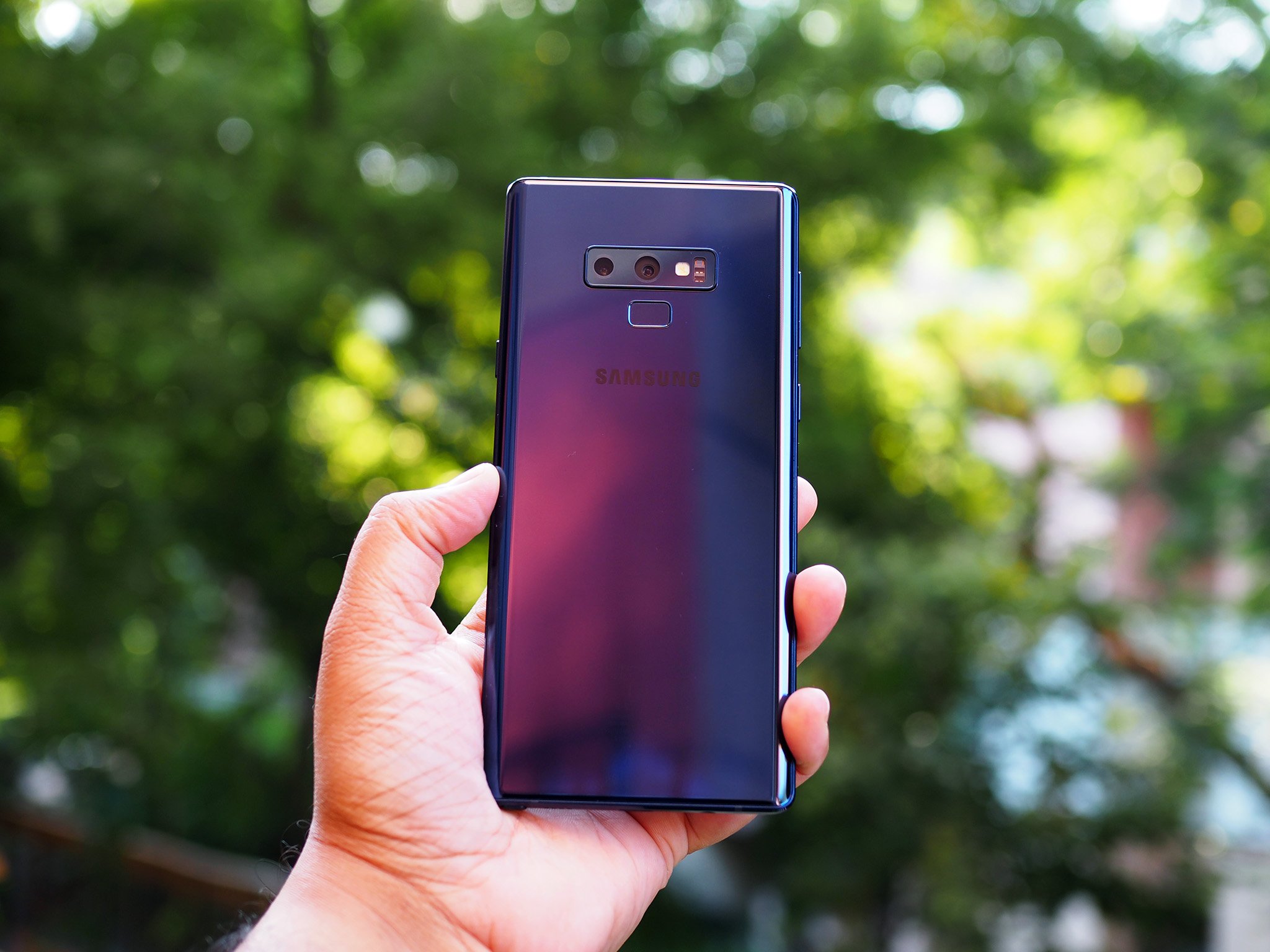When you sell over 20 million units of something, you don't change the formula. You instead try to make it better by tweaking a few elements. That's Samsung's strategy in a nutshell with the Galaxy Note 9.
The phone retains the same basic design aesthetic as the Note 8, with Samsung instead focused on polishing the overall experience, leading to a more vibrant display and finely-optimized software. But this being Samsung, we still got to see cool new features in the form of a Bluetooth-enabled S Pen and a new imaging module with variable aperture.
While we've written about the Note 9 extensively over the last three months, it makes sense to revisit the phone in a full review to see how it has weathered its first quarter. Without further ado, here's how the Note 9 is doing three months after its launch.
Pros:
- Class-leading AMOLED display
- All-new S Pen
- Exquisite hardware
- Headphone jack
- Excellent camera
Cons:
- Still on Oreo
- Bixby still isn't great
- Fast charging needs an update
Galaxy Note 9 What's held up
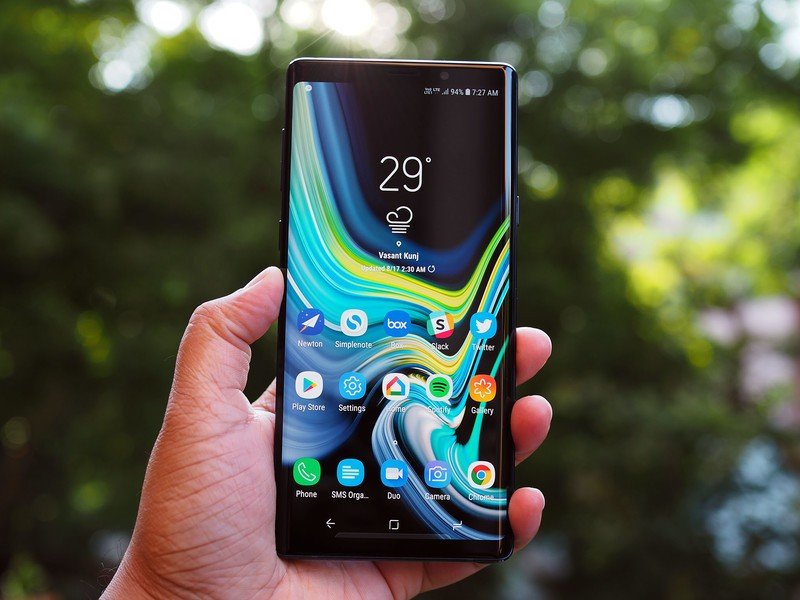
Samsung isn't pushing the boundaries of design quite like Vivo or OPPO, but the Note 9 builds on the company's industrial design. The overall aesthetic hasn't changed much from the Galaxy S9, and while this sounds counter-intuitive, I prefer the larger and thicker chassis of the Note 9 to the S9+. The Note 9 just feels that little bit more refined, and the added thickness makes it easier to hold the device.
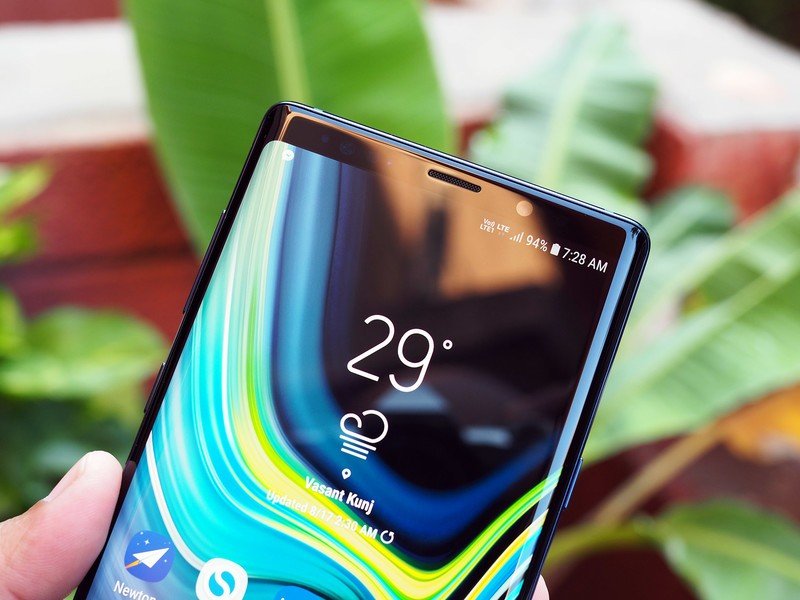
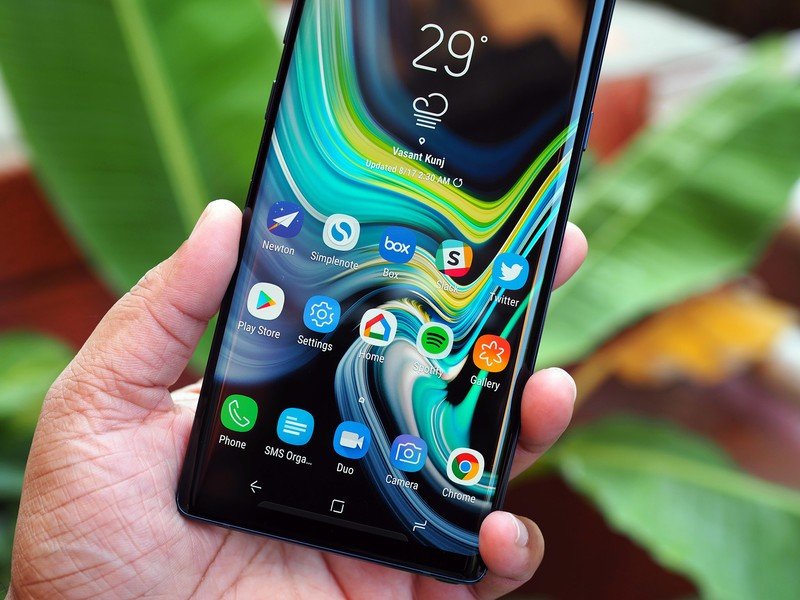
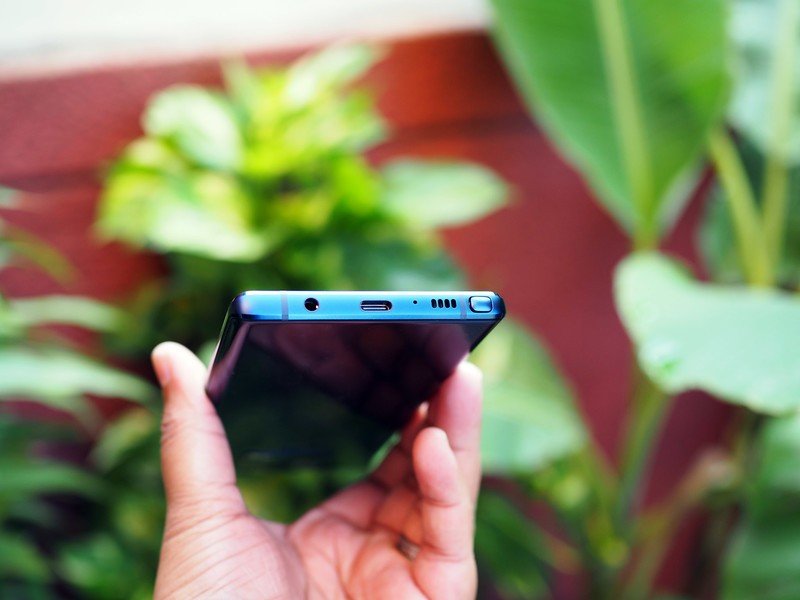
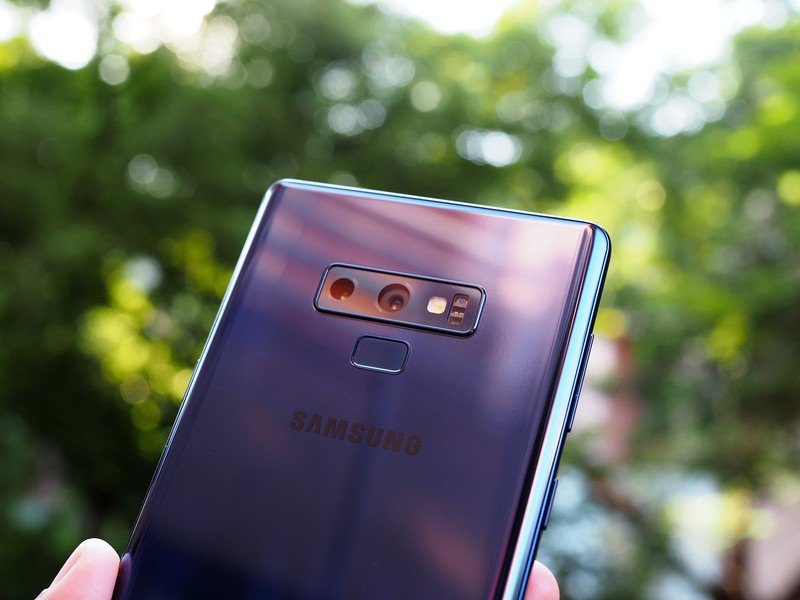
I've used the Note 9 on and off over the last three months, switching between the phone and the Pixel 3 XL and Huawei Mate 20 Pro. Those devices also sport great QHD AMOLED panels, but they're not quite as good as the screen on the Note 9. In my usage, the Note 9's screen proved to be brighter and more vibrant than any phone I've used so far.
The sunlight legibility in particular is excellent. I used the phone in the summer in Agra — where it went up to 37 degrees Celsius (98.6 Fahrenheit) — and even under the intense heat and glare I was able to see the contents on the screen without any issues whatsoever.
This is the best display on any phone today — Android or otherwise.
The display is complemented by excellent stereo speakers, and viewing HDR10 content from the likes of Netflix is a delight. And with even more manufacturers getting rid of the 3.5mm jack this year, Samsung continues to be one of the few companies that offers the analog jack.
I haven't used the analog jack nearly as much as I made the switch to Bluetooth, and one feature I particularly like on Samsung's flagships is dual audio. The feature debuted last year, and allows you to send audio over Bluetooth to two devices at once. It's one of those features that you don't really use a lot, but once you do, you'll never realize just how good it is. I started listening to audiobooks with my wife, and while we predominantly listen in the car, dual audio allows us to do the same when we're out jogging together and both of us have headphones on.
There's no performance degradation even after three months of use.
I usually see a drop-off in performance from Samsung phones at the two- to three-month mark, but that just hasn't been the case this year. The Galaxy S9+ continues to be just as fluid as it was the day I set it up, and the Note 9 is following in a similar vein. I also had a lot of problems with the placement of the fingerprint sensor on the Galaxy Note 8, but that hasn't been the case on the Note 9. The module sits underneath the camera assembly in its own housing, and the minor depression ensures you don't miss it on the back of the device.
Continuing with the theme of usability, the Note 9 proved to be more durable than it looks. The device took its share of tumbles in the three months I used it, and in one particular instance it fell from five feet onto a marble surface and skidded across the floor. In several instances the impact of the tumble ejected the S Pen from its enclosure. Thankfully, the phone itself didn't suffer any damage aside from a few dents to the metal mid-frame. Crucially, the glass panes came away undamaged.
The Note 9 shares the same camera hardware as the Galaxy S9+, but Samsung has rolled out a set of AI-based features like scene optimizer and flaw detection. And like the S9+, you get great shots regardless of the lighting conditions. There are a few cases where the device loses out to the Pixel 3, but in most scenarios it is able to hold its own next to Google's latest.





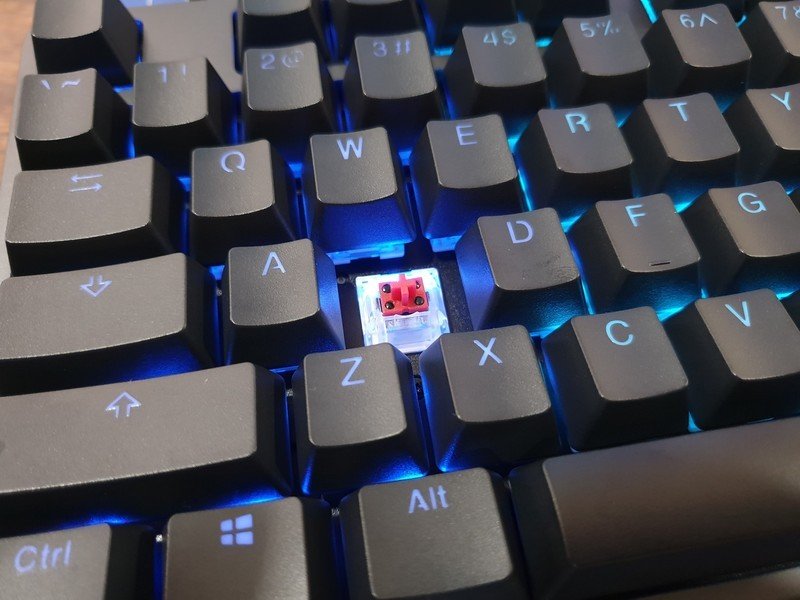
There are other Samsung-exclusive features that make the Note 9 great. Samsung Pay continues to lead the way for mobile payments, and it is one of the features I miss the most when switching away from a Samsung phone. Samsung Pay's ability to work over NFC as well as MST gives it a distinct edge, and the fact that it works at nearly all retail outlets makes using it as seamless as possible.
I haven't used the S Pen to a great extent in previous years, but that changed with the Note 9. The stylus picked up a host of new functionality — including Bluetooth LE connectivity — and I had a lot of fun using it as a remote shutter button for the camera. You can also customize a lot of actions for the single button on the stylus, including launching apps, controlling presentations, and for media playback. Then there's screen off memo, which is particularly useful for quickly jotting down things like phone numbers.
The Note 9 is the first Samsung phone I've used that doesn't have any major drawbacks.
Every single Samsung phone I've used over the last three years has had a flaw that prevented me from using it for more than a month at a time, but the Note 9 doesn't have any such drawbacks. The Galaxy S9+ was almost close to perfection, but the battery life was a letdown. The phone failed to last a full day even under medium load, making it less than ideal as a daily driver. Thankfully, Samsung's decision to stick a larger 4000mAh battery on the Note 9 paid off, and the phone had no issues delivering a day's worth of use consistently.
The end result is that the Note 9 is the most frustration-free Samsung phone I've used to date. There are absolutely on issues on the hardware or usability fronts, and the phone has just been a delight to use. The AMOLED panel is downright gorgeous, there's no performance degradation whatsoever even after nearly four months of usage, and the S Pen differentiates the Note 9 from the rest of the pack.
Galaxy Note 9 What hasn't aged well
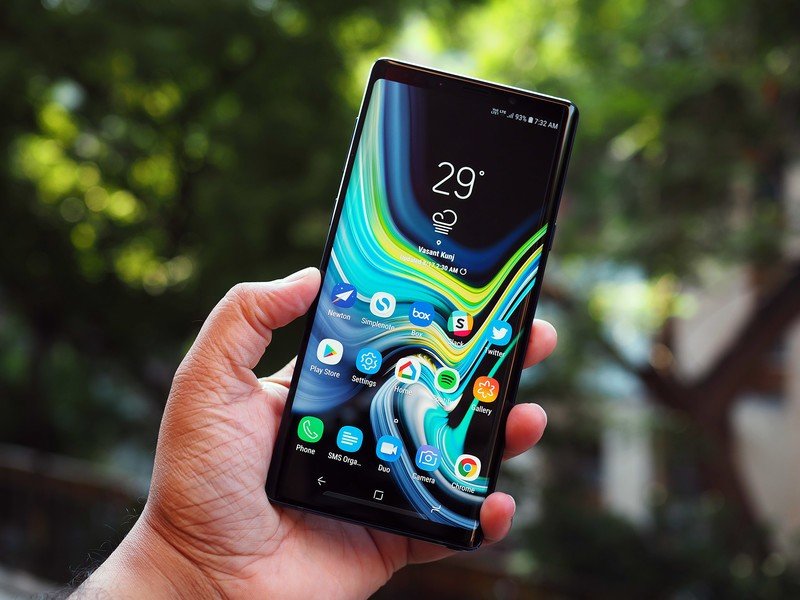
Software updates proved to be Samsung's Achilles heel in years past, and that continues to be the case with the Note 9 as well. We're nearing the end of 2018, and the Note 9 is still running Android 8.1 Oreo. Although Samsung is rolling out the One UI beta for the device, a stable Pie update isn't not going to arrive until Q1 2019.
Updates have never been Samsung's strong suit, but it's frustrating to see the manufacturer make little progress in this area. For what it's worth, Samsung got better at issuing monthly security updates — at least on its flagships — but if you're paying $1,000 for a phone, you'd expect timely platform updates as well as security patches.
Samsung still lags behind when it comes to software updates and fast charging.
Samsung also needs to overhaul its fast charging standard. There haven't been any changes in this front in the last three years, and Samsung continues to offer a 15W charger in the box. Huawei, for instance, offers 40W fast charging with the Mate 20 Pro, which is able to charge the phone from flat to 70% in just 30 minutes. What that effectively means is that you only need to plug in your phone for a half hour in the morning for all-day battery life.
OPPO goes one step further with its Super VOOC flash charge tech. The manufacturer uses a bi-cell system to deliver a massive 50W charge to devices like the R17 Pro, and that allows the battery to go from flat to 40% in just 10 minutes, and a full charge in under an hour. That sort of fast charging fundamentally alters the way you use your phone, and right now Samsung is lagging behind. The Note 9 takes one hour and forty minutes to fully charge, or nearly twice as long as the R17 Pro.
Finally, there's Bixby. Samsung's voice assistant just hasn't been useful — at least for me — and it isn't anywhere as good as Google Assistant. Like the S9 series, the Note 9 has a dedicated hardware button to invoke Bixby, and that was particularly bothersome during the first month of usage as I would end up inadvertently triggering Bixby every time I pulled the device out of my pocket. The worst part about it was that there was no way to disable the voice assistant, but Samsung thankfully rolled out an update to amend the issue.
Galaxy Note 9 Three months on
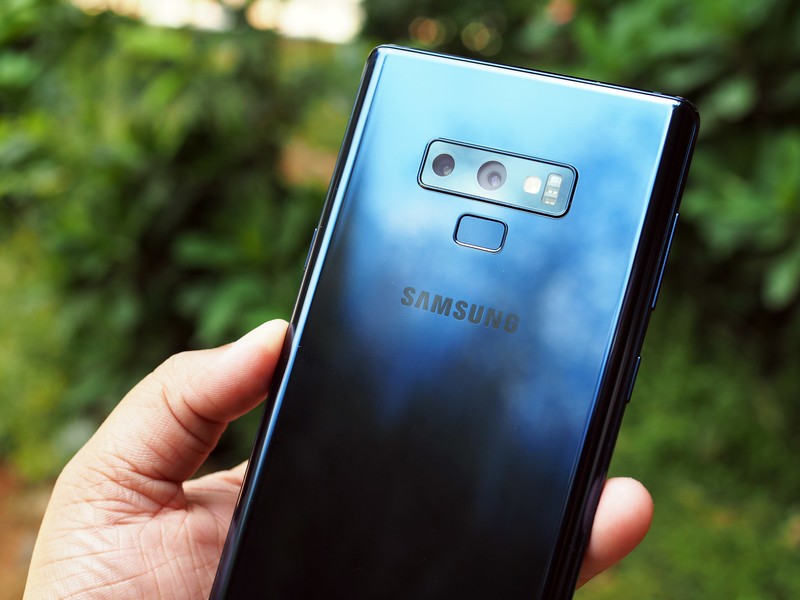
The Note 9 continues to be a solid choice if you're in the market for a high-end phone. The camera is one of the best out there, as it the AMOLED display. Samsung has done a magnificent job making sure the device isn't lacking when it comes to features; if anything, most users won't end up using all the stuff that's on the device.
There aren't a lot of alternatives to the Note 9. LG is trying to emulate Samsung's strategy with the V40, and while the phone clearly has a lot to offer, it isn't quite as good an overall package as the Note 9. The Mate 20 Pro is incredible and the biggest rival to the Note 9 right now, but the phone isn't officially available in the U.S.
The Pixel 3 is the most credible contender to the Note 9 in the U.S., offering a clean software experience and a fantastic camera. The Pixel 3 is the phone to beat when it comes to the camera, but it does miss out on a lot of features that make the Note 9 great. Simply put, if you want a high-end phone that doesn't miss out on any features, the Galaxy Note 9 is your default option.
4.5 out of 5
The Note 9 offers everything you're looking for in a flagship. The phone combines an exquisite design with the best display on any phone today, and you also get great battery life, top-notch performance, excellent cameras, wireless charging, IP68 water resistance, and a headphone jack. There isn't a high-end phone today that delivers quite the same combination of features. The Note 9 has aged very well in its first three months, and I expect that to continue as we head into 2019.

Harish Jonnalagadda is Android Central's Senior Editor overseeing mobile coverage. In his current role, he leads the site's coverage of Chinese phone brands, networking products, and AV gear. He has been testing phones for over a decade, and has extensive experience in mobile hardware and the global semiconductor industry. Contact him on Twitter at @chunkynerd.
